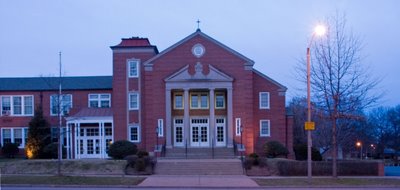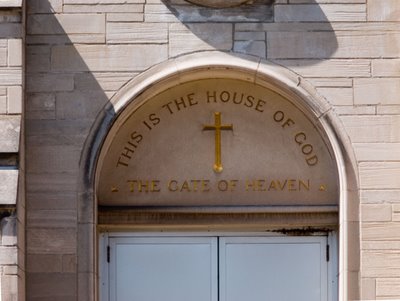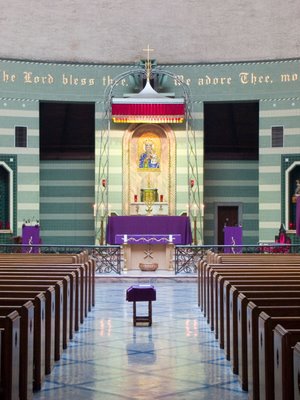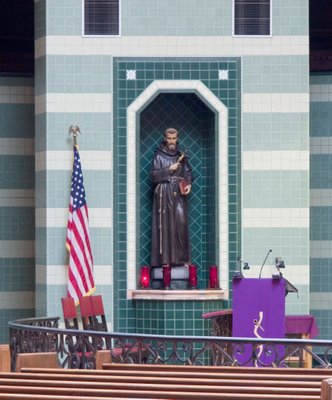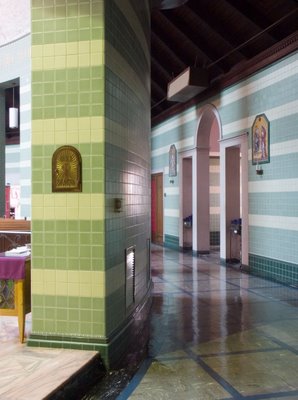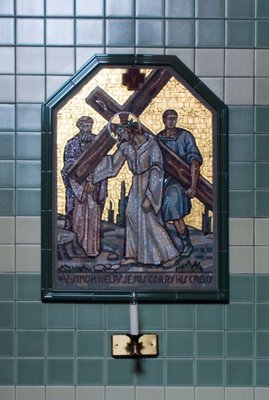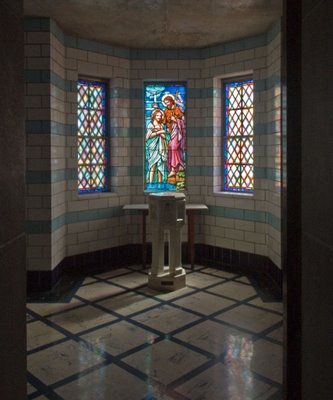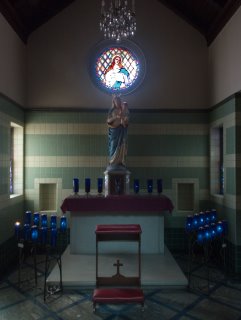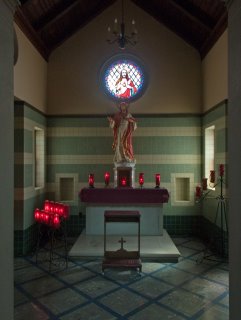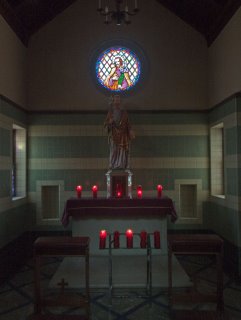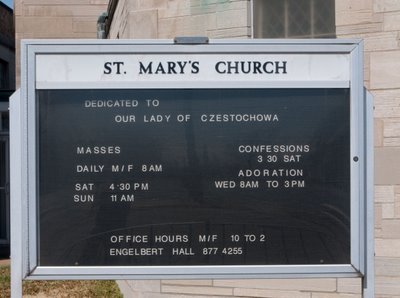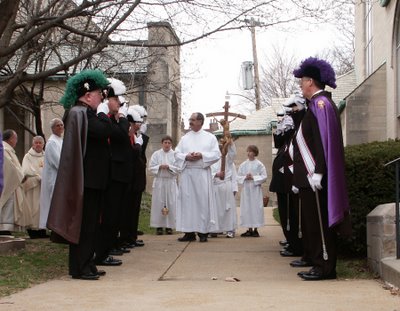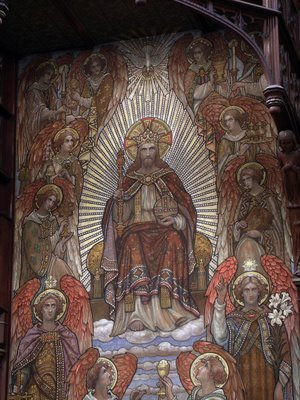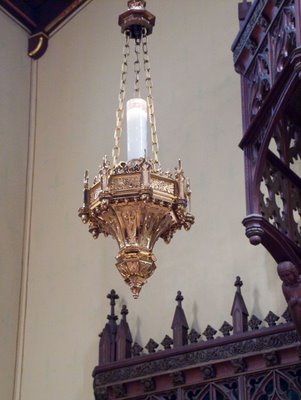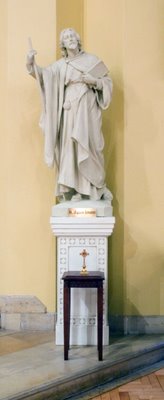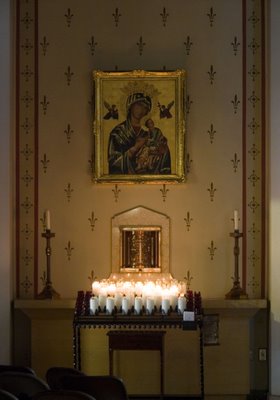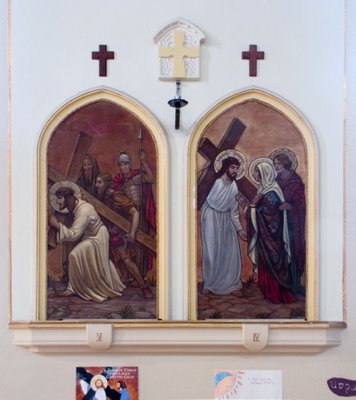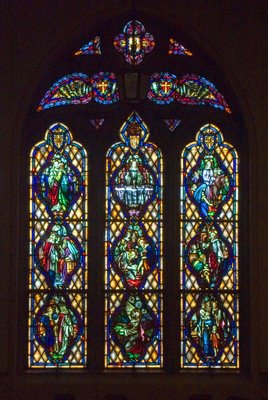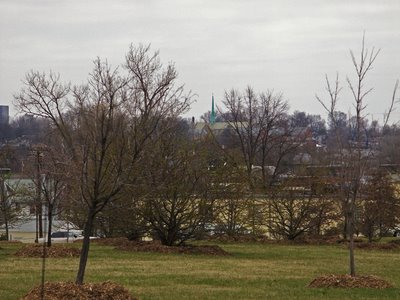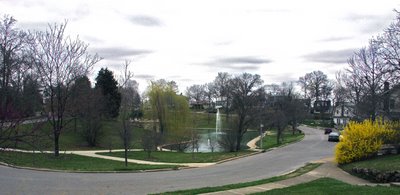In 1832, Englishman S. A. Ferrall published a book,
A Ramble of Six Thousand Miles through the United States of America. Here is an exerpt of his travels in the Saint Louis area, starting on the flood plain on the east side of the Mississppi River, just across from the city.
From Lebanon we proceeded across a chain of hills, and came in on a beautiful plain, called the "American bottom." Some of those hills were clear to the summit, while others were crowned with rich foliage. Before us, to the extreme right, were six or seven tumuli, or "Indian mounds;" and to the left, and immediately in front, lay a handsome wood. From the hills to the river is about six miles; and this space appears evidently to have been a lake at some former period, previous to the Mississippi's flowing through its present deep channel. Several stagnant ponds lay by our road; sufficient indications of the presence of disease, which this place has the character of producing in abundance. The beauty of the spot, and the fertility of the soil, have, notwithstanding, induced several English families to settle here. Their houses are built of brick, and their gardens and farms are laid out and fenced tastefully.
After traversing the wood, we at length came in sight of the Mississippi, which is here about three quarters of a mile broad. There is a steam ferry-boat stationed at this point, (opposite St. Louis), the construction of which is rather singular. It is built nearly square, having in the middle a house containing two spacious apartments, and on each side decks, on which stand horses, oxen, waggons and carriages of every description.
St. Louis is built on a bluff bank. The
principal streets rise one above the other, running parallel with the river; the houses are mostly built of stone, the bank being entirely composed of that material, the walls whitewashed, and the roofs covered with tin: from the opposite side it presents a very gay appearance. The ascent from the water's edge to the back of the town is considerable, but regular. The streets intersect each other at right angles, as do those of most American towns. They are much too narrow, having been laid down and built on from a plan designed by the Spanish commandant, previous to the Missouri territory becoming part of the United States. The population is estimated at six thousand, composed of Creole-French, Irish, and Americans.
St. Louis must, at some future period, become decidedly the most important town in the western country, from its local and relative situation. It is seated on the most favourable point below the mouths of two noble rivers, the Missouri and the Illinois, having at its back an immense tract of fertile country, and open and easy communication with the finest parts of the western and north-western territories. These advantages, added to the constant and uninterrupted intercourse which it enjoys with the southern ports, must ultimately make St. Louis a town of wealth and magnitude.
We visited General Clarke's museum, which chiefly contains Indian costumes and implements of war, with some minerals and fossils, a portion of which he collected while on the expedition to the Rocky mountains with Lewis; and also, two sods of good black turf, from the bogs of Allen, in Ireland. A sight which was quite exhilarating, and reminded me so strongly of the fine odour which exhales from the products of illicit distillation, that guagers and potteen, like the phantoms of hallucination, were presenting themselves continually to my imagination for the remainder of that day.
General Clarke is a tall, robust, grey-headed old man, with beetle-brows, and uncouthly aspect: his countenance is expressive of anything but intelligence; and his celebrity is said to have been gained principally by his having been the
companion of Lewis to the Rocky mountains.
The country around St. Louis is principally prairie, and the soil luxuriant. There are many excellent farms, and some fine herds of cattle, in the neighbourhood: yet the supply of produce seems to be insufficient, as considerable quantities are imported annually from Louisville and Cincinnati. The principal lots of ground in and near the town are at the disposal of some five or six individuals, who, having thus created a monopoly, keep up the price. This, added to the little inducement held out to farming people in a slave state, where no man can work himself without losing
caste, has mainly contributed to retard the increase of population and prosperity in the neighbourhood of St. Louis.
There are two fur companies established here. The expeditions depart early in spring, and generally return late in autumn. This trade is very profitable. A person who is at present at the head of one of those companies, was five years ago a bankrupt, and is now considered wealthy. He bears the character of being a regular Yankee; and if the never giving a direct answer to a plain question constitutes a Yankee, he is one most decidedly. We had some intention of crossing to Santa Fé, in New Mexico, and we accordingly waited on him for the purpose of making some inquiries relative to the departure of the caravans; but to any of the plain questions we asked, we could not get a satisfactory answer,—at length, becoming tired of hedge-fighting, we departed, with quite as much information as we had before the interview.
A trapping expedition is being fitted out for the Rocky mountains, on an extensive scale. The number of persons intended to be employed on this, is about two hundred. Teams for the transportation of merchandize and luggage are preparing, which is an accommodation never enjoyed before by trappers, as pack-horses have always hitherto been substituted. These waggons may also be found useful as
barricades, in case of an attack from the Indians. The expedition will be absent two or three years.
A trade with Santa Fé is also established. In the Spanish country the traders receive, in exchange for dry goods and merchandize of every description, specie, principally; which makes money much more plentiful here than in any other town in the western country.
The caravans generally strike away, near the head waters of the Arkansas and Red rivers, to the south-west, close to the foot of the Rocky mountains—travelling above a thousand miles through the Indian country before they reach the Mexican boundary. These journeys are long and tedious, and require men of nerve and muscle to undertake them; the morasses and rivers which they have to cross—the extensive prairies and savannahs they have to traverse, and the dense forests to penetrate, are sufficient to subdue any but iron constitutions.
The countries west of the Mississippi are likely to be greatly enriched by the trade with Mexico; as, in addition to the vast quantities of valuable merchandize procured from that country, specie to a very large amount is put in circulation, which to a new country is of incalculable advantage. The party which lately returned to Fayette in Missouri, brought 200,000 dollars in specie.
The lead-mines of Galena and Potosi inundate St. Louis with that metal. The latter mines are extensive, consisting of forty in number, and are situated near the head of Big-river, which flows into the Merrimac: a water transportation is thus effected to the Mississippi, eighteen miles below St. Louis. This, however, is only in the spring and fall, as at other seasons the Merrimac is not navigable for common-sized boats, at a greater distance than fifty miles from its mouth. The Merrimac is upwards of 200 miles in length, and at its outlet it is about 200 yards in breadth.
The principal buildings in St. Louis are, the government-house, the theatre, the bank of the United States, and three or four Catholic and Protestant churches. The Catholic is the prevalent religion. There are two newspapers published here. Cafés, billiard tables, dancing houses, &c., are in abundance.
The inhabitants of St. Louis more resemble Europeans in their manners and habits than any other people I met with in the west. The more wealthy people generally spend some time in New Orleans every year, which makes them much more sociable, and much less
brusque than their neighbours.
We visited Florissant, a French village, containing a convent and a young ladies' seminary. The country about this place pleased us much. We passed many fine farms—through open woodlands, which have much the appearance of domains—and across large tracts of sumach, the leaves of which at this season are no longer green, but have assumed a rich crimson hue. The Indians use these leaves as provision for the pipe.
We stayed for eight days at a small village on the banks of the Mississippi, about six miles below St. Louis, and four above Jefferson barracks, called Carondalet, or,
en badinage, "vide poche." The inhabitants are nearly all Creole-French, and speak a miserable
patois. The same love of pleasure which, with bravery, characterizes the French people in Europe, also distinguishes their descendants in Carondalet. Every Saturday night
les garcons et les filles meet to dance quadrilles. The girls dance well, and on these occasions they dress tastefully. These villagers live well, dress well, and dance well, but have miserable-looking habitations; the house of a Frenchman being always a secondary consideration. At one of those balls I observed a very pretty girl surrounded by gay young Frenchmen, with whom she was flirting in a style that would not have disgraced a belle from the
Faubourg St. Denis, and turning to my neighbour, I asked him who she was; he replied, "Elle s'appelle Louise Constant, monsieur,—c'est la rose de village." Could a peasant of any other nation have expressed himself so prettily, or have been gallant with such a grace?
Accompanied by our landlord, we visited Jefferson barracks. The officer to whom we had an introduction not being
chez-lui at that time, we were introduced to some other officers by our host, who united in his single person the triple capacity of squire, or magistrate, newspaper proprietor, and tavern-keeper. The officers, as may be expected, are men from every quarter of the Union, whose manners necessarily vary and partake of the character of their several states.
The barracks stand on the bluffs of the Mississippi, and, with the river's bank, they form a parallelogram—the buildings are on three sides, and the fourth opens to the river; the descent from the extremity of the area to the water's edge is planted with trees, and the whole has a picturesque effect. These buildings have been almost entirely erected by the soldiers, who are compelled to work from morning till night at every kind of laborious employment. This arrangement has saved the state much money; yet the propriety of employing soldiers altogether in this manner is very questionable. Desertions are frequent, and the punishment hitherto inflicted for that crime has been flogging; but Jackson declares now that shooting must be resorted to. The soldiers are obliged to be servilely respectful to the officers,
pulling off the undress cap at their approach. This species of discipline may be pronounced inconsistent with the institutions of the country, yet when we come to consider the materials of which an
American regular regiment is composed, we shall find the difficulty of producing order and regularity in such a body much greater than at first view might be apprehended. In this country any man who wishes to work may employ himself profitably, consequently all those who sell their liberty by enlisting must be the very dregs of society—men without either character or industry—drunkards, thieves, and culprits who by flight have escaped the penitentiary, and enlisted under the impression that the life of a soldier was one of idleness; in which they have been most grievously mistaken. When we take these facts into consideration, the difficulty of managing a set of such fellows will appear more than a little. Yet unquestionably there are individuals among the officers whose bearing is calculated to inspire any thing but that respect which they so scrupulously exact, and without which they declare it would be impossible to command. The drillings take place on Sundays.
Near Carondalet we visited two slave-holders, who employed slaves in agriculture; which practice experience has shewn in every instance to be unprofitable. One had thirteen; and yet every thing about his house rather indicated poverty than affluence. These slaves lived in a hut, among the outhouses, about twelve feet square—men, women, and children; and in every respect were fully as miserable and degraded in condition as the unfortunate wretches who reside in the lanes and alleys of St. Giles' and Spitalfields, with this exception, that
they were well fed. The other slave-holder, brother of the former, lived much in the same manner;—but it is necessary to observe that both these persons were hunters, and that hunters have nothing good in their houses but dogs and venison.
T—— having gone on a hunting excursion with our host, and some of his friends, B—— and I drove the ladies to the plantation of the latter gentleman. He had a farm on the bluffs, which was broken and irregular, as is always the case in those situations. Large holes, called "sink-holes," are numerous along these banks; the shape of them is precisely that of an inverted cone, through the apex of which the water sinks, and works its way into the river. Cedar trees grow on the rocks, and the scenery is in many places extremely grand. Wild-geese congregate in multitudes on the islands in the Mississippi, and at night send forth the most wild and piercing cries.
Our hostess was one of those sylvan Amazons who could handle any thing, from the hunting-knife to the ponderous axe; and she dressed in the true sylph-like costume of the backwoods. Her
robe, which appeared to be the only garment with which she encumbered herself, fitted her, as they say at sea, "like a purser's shirt on a handspike," and looked for all the world like an inverted sack, with appropriate apertures cut for head and arms; she wore shoes, in compliment to her guests—her hair hung about her shoulders in true Indian style; and altogether she was a genuine sample of backwoods' civilization. We were placed in a good bed—the state-bed of course—and as we lay, paid our devotions to Urania, and contemplated the beauties of the starry firmament, through an aperture in the roof which would have admitted a jackass.
The proprietor assured us that his slaves produced him no more than the bare interest of the money invested in their purchase, and that he was a slave-holder not from choice, but because it was the prevailing practice of the country. He said he had two handsome Mulatto girls hired out at the barracks for six dollars per month each.




